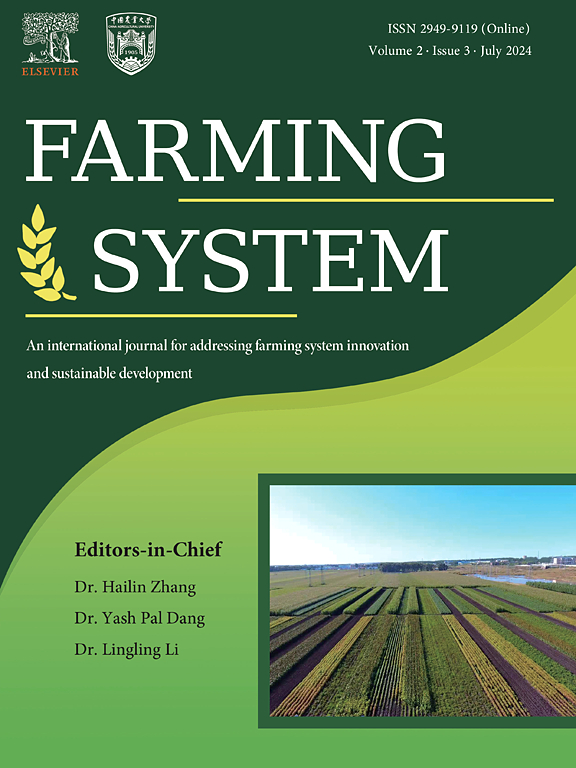Ver ítem
- xmlui.general.dspace_homeCentros Regionales y EEAsCentro Regional Buenos Aires NorteEEA PergaminoArtículos científicosxmlui.ArtifactBrowser.ItemViewer.trail
- Inicio
- Centros Regionales y EEAs
- Centro Regional Buenos Aires Norte
- EEA Pergamino
- Artículos científicos
- Ver ítem
Changes in productive, socio-economic, and environmental performance of field crop farming in the Argentine Pampas, 2007-2018
Resumen
This study fills important gaps in research by analyzing the evolution over time of productive, environmental, and socio-economic aspects of agricultural production in the Argentine Pampas, utilizing farm-level data. A longitudinal study was conducted to examine the changes that occurred in farming systems during the period 2007-2018. The study evaluated the changes in 30 farms, examining modifications in the structure and management of each farm, as well
[ver mas...]
This study fills important gaps in research by analyzing the evolution over time of productive, environmental, and socio-economic aspects of agricultural production in the Argentine Pampas, utilizing farm-level data. A longitudinal study was conducted to examine the changes that occurred in farming systems during the period 2007-2018. The study evaluated the changes in 30 farms, examining modifications in the structure and management of each farm, as well as in productive, economic, and environmental performance. Canonical correlation analysis was used to relate the changes that occurred in performance to farms' characteristics at the beginning of the study period. The results indicated that, among the farms that stayed in business, there were no significant changes in land tenure and the amount of labor employed. There was a significant increase in the average age of farmers by 7 years, along with a decrease in the percentage of farmers expecting growth, dropping from 70% to 42% over the period. Canonical correlation analysis revealed that smaller farms, with a higher number of workers at the beginning of the period, were more likely to expand their farming area during the analysis period. The findings also indicate a substantial turnover of producers, with leaving farms being succeeded by larger-scale operations. The yields of the main crops and the direct production costs increased by 16% and 48% respectively, during the period. The environmental indicators for the main crops present a mixed picture: soil organic carbon input increased by 12%, while environmental impact quotient decreased on average, by 6% for cereals but increased by 40% for soybeans, and nutrient imbalances rose. The significance of this study resides in its application of a comprehensive approach to analyze the transformation of farming systems over time.
[Cerrar]

Autor
Bitar, María Victoria;
Cabrini, Silvina María;
Urcola, Hernan Alejandro;
Fuente
Farming System : 100101. (Available online 21 May 2024)
Fecha
2024-05
Editorial
Elsevier
ISSN
2949-9119
Documentos Relacionados
Formato
pdf
Tipo de documento
artículo
Proyectos
(ver más)
INTA/2019-PD-E3-I065-001, Gestión integral del riesgo agropecuario
INTA/2019-PE-E10-I218-002, Sistema de información y gestión socio-económico para la toma de decisiones en el sector agropecuario
Palabras Claves
Derechos de acceso
Abierto
 Excepto donde se diga explicitamente, este item se publica bajo la siguiente descripción: Creative Commons Attribution-NonCommercial-ShareAlike 2.5 Unported (CC BY-NC-SA 2.5)
Excepto donde se diga explicitamente, este item se publica bajo la siguiente descripción: Creative Commons Attribution-NonCommercial-ShareAlike 2.5 Unported (CC BY-NC-SA 2.5)


